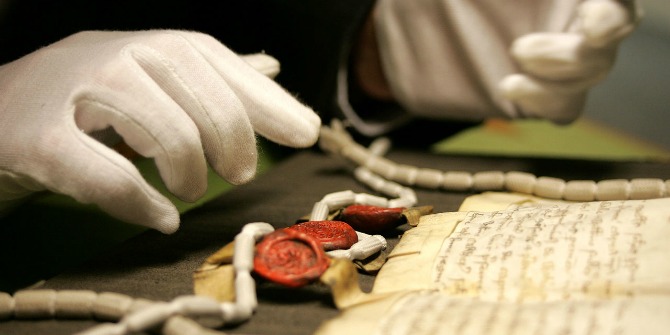 Competition for funding and jobs is often cited as a helpful mechanism for spurning innovation and productivity in science. But Jessica Polka challenges this idea by drawing from the results of an experiment known as Duncker’s candle problem. The experiment revealed external rewards can actually inhibit creative thinking. If science is like the version of the candle problem, are we unknowingly repressing our capacity for innovation with the threat of failure or promise of external reward?
Competition for funding and jobs is often cited as a helpful mechanism for spurning innovation and productivity in science. But Jessica Polka challenges this idea by drawing from the results of an experiment known as Duncker’s candle problem. The experiment revealed external rewards can actually inhibit creative thinking. If science is like the version of the candle problem, are we unknowingly repressing our capacity for innovation with the threat of failure or promise of external reward?
Intense competition in the biomedical sciences has been a hot topic recently, pinned as everything from the impetus to commit fraud to a symptom of the overall unsustainability of the research ecosystem. It drives us to hide our findings until publication, chase down scientific fads, and leave negative data to languish.
Imagine what it would be like to be free of this pressure. If all other scientists in your field suddenly switched the direction of their research, you would probably continue your work out of a sense of curiosity, a recognition of the value of knowledge, and the pleasure you likely take in problem solving. But would you be driven to maximize your productivity or to do your most rigorous work, knowing it would need to withstand criticism? Probably not. It’s likely that some competition is good for us; it drives us to set high standards and produce the best science possible. As we try to imagine what a stable biomedical research enterprise would look like, how much competition is good, and how much is bad? What is the optimal level needed to stimulate innovation, and at what point does it become inhibitory?
Up until a few months ago, I would have thought that point was marked with obvious symptoms like fraud, secrecy, and low morale. But then my labmate (thanks Joe!) pointed me to some interesting research by Glucksberg in 1962 in which test subjects were asked to solve what is now known as Duncker’s candle problem.
 Image credit: Duncker, Karl (1945) Wikimedia, Public Domain
Image credit: Duncker, Karl (1945) Wikimedia, Public Domain
Duncker’s original setup was simple: Subjects were given matches, a candle, and a box of thumbtacks; they were then asked to attach the candle to the wall. If the tacks were presented to the subject outside of their box, the subjects were faster to arrive at the solution to the problem: using the empty tack box as a shelf for the candle. However, if the tacks were left in the box when given to the subject, they took longer, presumably because they perceived the box only as a container for the tacks.
Glucksberg’s innovation was to perform both experimental conditions (tacks inside and tacks outside the box) under two conditions: one in which the subjects were simply told they were being timed, and another in which cash prizes were promised to the fastest performers.
For the subjects presented with the straightforward task (tacks outside of the box), the group offered the reward went faster than the ones without it. But for the one requiring more innovative thinking, the prospect of a reward actually slowed the subjects down. These data are cited as an example that external rewards can inhibit to creative thinking.
If science is like the version of the candle problem with the tacks in the box (and sometimes that box is also inside a bag, inside a suitcase, underneath the stairs), are we unknowingly repressing our capacity for innovation with the threat of failure or promise of external reward? Scientists will always be driven to achieve excellence, whether it is rewarded by the intrinsic satisfaction of discovery or a prestigious prize. That aside, is the pressure created by 9% paylines and a scarcity of stable jobs stimulating academic science, or squelching the creativity necessary for innovation?
This piece originally appeared on the ASCB Post and is reposted with permission.
Note: This article gives the views of the author, and not the position of the Impact of Social Science blog, nor of the London School of Economics. Please review our Comments Policy if you have any concerns on posting a comment below.
Jessica Polka is interested in the spatial organization of the bacterial cell. Having studied a plasmid-segregating actin homolog during her PhD with Dyche Mullins at UCSF, she is currently working on natural and engineered bacterial compartments during a postdoc in Pam Silver’s lab at the Harvard Medical School.







